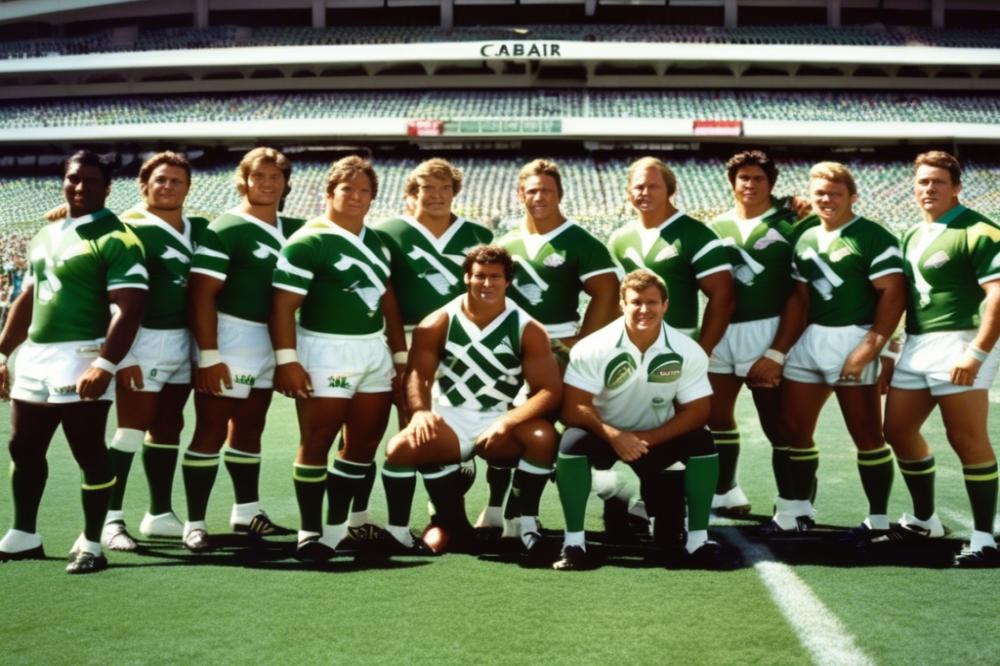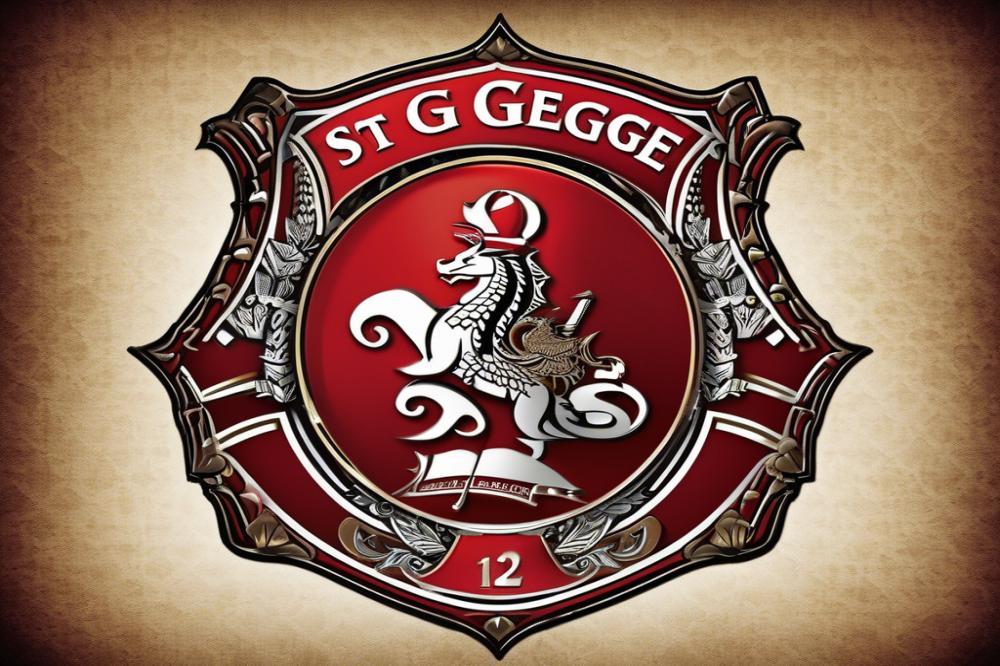Overview of the Canberra Raiders
The Canberra Raiders, a squad born in the heart of the Australian National Rugby League, exemplify grit and determination. Founded in 1981, the team quickly established itself as a force to be reckoned with. The club’s creation brought a fresh infusion of energy into the league, drawing passionate support from their loyal fan base.
Initially, the Raiders struggled to cement their place among the elite teams, but persistence was key. Their journey wasn’t without hurdles; however, these challenges only fueled their resolve. The team’s tenacity and spirit began to shine through, setting the stage for their remarkable #main_keyword# in later years.
Setting the Stage for Their Rise in the 1990s
Fast forward to the 1990s, a decade when the Canberra Raiders transformed from hopeful newcomers to dominant champions. The stars began to align. Players with immense talent and unmatched dedication came together, creating a unique synergy on and off the field. This era witnessed not only technical prowess but also a growing camaraderie among the team members.
During this golden decade, the Raiders captured the #anchor_text_1# and etched their name in rugby history. Their #anchor_text_2# was a testament to their hard work and strategic brilliance. For the fans, it was a dream come true, providing countless memories and moments of glory.
As the team rose to dominance, their influence extended beyond the games. The Raiders inspired a new generation of players and supporters. The 1990s weren’t just about winning; they were about a legacy that continues to resonate with the heart and soul of rugby enthusiasts.
The Rise to Power: Early Successes

The Canberra Raiders emerged as a formidable force in Rugby League at a time when the sport was fiercely competitive. Key events in the late 1980s planted seeds for their dominance in the early ’90s. The 1989 victory against Balmain Tigers in the Grand Final remains a hallmark moment, announcing the Raiders’ arrival on the grand stage.
Key Players and Coaching Staff
The team thrived under the watchful eye of coach Tim Sheens. His strategic mastery cannot be overstated. Equally pivotal were a cohort of talented players: Mal Meninga, Ricky Stuart, Laurie Daley, and Bradley Clyde. These legends of the game were instrumental in shaping the team’s culture and mentality. Meninga’s leadership on and off the field inspired his teammates alike.
Significant Matches and Victories
In 1990, the Raiders faced Penrith Panthers in a match that tested their mettle. The victory in the Grand Final was pivotal, cementing back-to-back championships. Another critical game came in 1991, albeit not ending in victory. At that time, the team’s resilience and skill were showcased even in defeat. Each of these clashes contributed to the narrative of a golden era.
Such performances imprinted the Canberra Raiders in the annals of rugby league history. The early 1990s were enriched by these iconic events, ensuring a legacy of remarkable achievements.
The Golden Era in Full Swing: Achievements and Titles

In the 1990s, the Canberra Raiders emerged as a dominating force in rugby league. The decade was marked by thrilling victories and numerous accolades. Their journey through those years reads like an epic guided by skill, determination, and a touch of genius.
Detailed Review of Major Achievements During the 1990s
The Raiders, during this decade, became synonymous with success in the rugby league world. They clinched the NRL Premiership in 1990 and again in 1994, building a reputation that left a lasting legacy. Constantly reaching finals elevated their status. Players like Mal Meninga and Laurie Daley were instrumental in crafting their winning culture. Youthful talent combined with veteran experience created an unbeatable synergy. Each season presented new challenges, but their resilience never waned.
Analysis of NRL Grand Finals Appearances and Wins
In the 1990s, the Raiders reached the NRL Grand Finals three times. Their triumphs in 1990 and 1994 highlighted their excellence. These victories cemented their position as a powerhouse. Amid fierce competition, their strategy of agile defense and swift offense led to success. Though the 1991 final didn’t result in a win, it showcased their persistent competitive edge.
Impact of Strategic Plays and Game Strategies
Strategic plays defined the Raiders’ gameplay. Coach Tim Sheens was pivotal in developing innovative strategies. His ability to adapt the team’s style to exploit opponents’ weaknesses was remarkable. The use of wide ball plays and strong defensive lines bewildered competitors. The strategic brilliance was a cornerstone of their success. It wasn’t just about skill; understanding the field dynamics allowed them to maneuver triumphantly. Their tactics during critical moments often changed the course of games. Every play had a purpose, executing each with precision.
Key Players and Coaching Strategies

Profiles of Influential Players During This Period
In the 1990s, the Canberra Raiders were unstoppable. Their success rode on the backs of a few remarkable individuals. Mal Meninga, a legend on the field, led by example. His leadership and power were unrivaled. His ability to inspire teammates made all the difference. Another standout player was Ricky Stuart. Known for his tactical mind, Stuart could read the game like no other. His agility and quick decision-making often surprised opponents. Laurie Daley, too, played a pivotal role. A natural leader, Daley combined skill with strategy. His vision on the field was clear and precise.
Insights Into Coaching Strategies and Innovations
Tim Sheens, the mastermind behind the Raiders, had a knack for innovative tactics. He emphasized teamwork above all. His strategies focused on seamless playmaking. Players were encouraged to communicate effectively. Sheens introduced new training regimes. Simulations of match conditions during practice became routine. This approach kept players engaged and ready for any scenario. He also promoted fitness, ensuring players reached their peak performance. The coaching staff held weekly strategy meetings. These sessions were collaborative and inclusive.
Contribution to the Team’s Dominance
The combination of skillful players and strategic coaching ensured the Raiders’ dominance. Each player worked in synergy, creating a cohesive unit on the field. Their unmatched performances led to numerous victories. Innovative tactics employed by the coaching team kept the opposition guessing. The Raiders embraced a culture of excellence. This culture fostered resilience and ambition. Their collective efforts cemented their legacy in rugby league. Such an era of dominance remains an exemplar in the sport’s history.
Impact on Australian Rugby League
The Canberra Raiders’ success in the 1990s left an indelible mark on the Australian rugby league landscape. They changed how the game was perceived and played. Their ability to win with flair altered tactics and strategies across the league. Other teams took notice, pushing every club to elevate their performance. Before the Raiders’ rise, few teams played with such consistent excellence.
The Legacy of the Canberra Raiders’ Dominance
Their legacy transcends mere victories on the field. Fans adored their distinctive style and competitive spirit. Clubs tried to emulate their winning formula. Their roster boasted talent that inspired young athletes nationwide. During these golden years, local and regional support for rugby league intensified. The Raiders’ triumphs built a foundation for future generations. Even today, pundits remember their era as a pinnacle of sporting success.
How Their Success Influenced Rugby League in Australia
Teams across the league felt compelled to innovate. Coaching methods evolved to keep pace with the demands set by the Raiders. Training regimens became more rigorous. Players worked harder to develop diverse skill sets. The club’s success inspired a broader audience, igniting a love for rugby that persisted long after their winning streak ended. New talent emerged, motivated by the Raiders’ achievements. Their influence extends beyond that era, shaping recruitment and selection processes.
Cultural and Community Impact
The community felt a renewed sense of pride. More young players aspired to join rugby leagues, thanks to the team’s exploits. Towns rallied behind the Raiders, fostering community spirit and unity. With each win, their cultural relevance grew deeper. Fans shared in their joy, creating lasting bonds and memorable moments. The Raiders’ dominance was not just about sports; it was a cultural revolution. The Canberra spirit flourished, transcending barriers and bringing people together in celebration of their rugby heroes.
Challenges and Transition Post-1990s
Discussion on Challenges Faced Transitioning into 2000s
The Canberra Raiders, renowned for their prowess in the 1990s, faced a significant transition as the new decade approached. As the 90s glory began to fade, adapting to the evolving landscape of Rugby league was no small feat. Competition intensified with other teams bolstering their rosters. Financial constraints also loomed, impacting player retention and recruitment. New rules and strategies emerged, demanding agility and innovation from the Raiders’ coaching staff. These hurdles tested the team’s resilience and vision.
Analysis of Team Changes and Impacts Post-Golden Era
Significant roster changes marked the early 2000s for the Raiders. Legendary players, who had been the pillars of their golden era, began retiring or moving on. This ushered in a wave of fresh talent. While fresh faces brought a younger energy, they also lacked the experience of their predecessors. The transition period brought mixed results as the team worked to build cohesion. Experienced players’ departures left a gap in leadership, affecting the team’s dynamics on the field. The process of merging new and old inevitably shaped the Raiders’ identity.
Current State of the Team and Its Legacy
Today’s Canberra Raiders reflect a tapestry woven from years of challenge and growth. They may not dominate as they did in the past, but their impact on Rugby league history remains indelible. The team continues to foster new talent, striving to rekindle the fire of former glories. Modern-day fans admire their resolve and spirit. Canberra’s legacy lives on through its community support and enduring passion for the game. The stories of battle and triumph from the golden age still echo in the halls of their home ground.
Reflections on the Golden Era
The 1990s Canberra Raiders were more than a sports team; they were a phenomenon that left an indelible mark on rugby league. This decade represented a unique era of dominance, where the Raiders’ formidable style and talent intersected perfectly with the passion of their fans. Their success was not just in numbers but in creating memories that last across generations. Reflecting on this period, their accomplishments still glow brightly in the annals of sports history, a testament to their prowess on the field.
Enduring Influence on Raiders’ Identity
The influence of the 1990s is still deeply etched in the Raiders’ identity. The grit, skill, and teamwork exhibited then continue to define the team’s spirit today. Players from that era became legends, inspiring young athletes who dream of donning the green jersey. Each game still echoes with the cries of past victories, reminding us that the present Raiders stand on the shoulders of those giants. They set a standard of excellence that the team strives to uphold even now.
Future Prospects and Fan Nostalgia
Looking forward, the future for the Raiders appears promising. New talents are emerging, eager to carve out their own legacy. Yet, along with this optimism, there exists a profound nostalgia among fans and former players. Memories of the 1990s continue to tug at heartstrings, serving as a beacon of what can be achieved. As the team moves ahead, the connection between past triumphs and future aspirations is unbreakable. After all, for many, the spirit of the 1990s will remain an inextricable part of the fabric of #anchor_text_3#, influencing #anchor_text_4# with each passing season.



